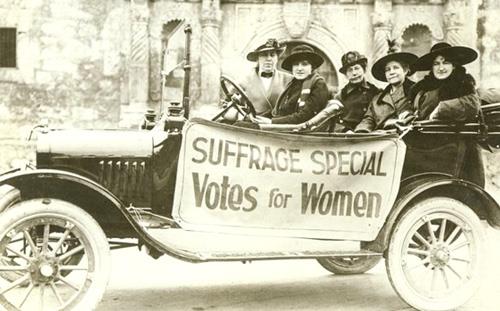
Four hours might seem like a long time to trace the history of how America finally and reluctantly granted women the right to vote.
If so, just imagine how the passage of time felt to the women who spent close to a century trying to convince American men that they should share this foundational tenet of democracy.
The Vote, an American Experience documentary that runs 9-11 p.m. ET Monday and Tuesday on PBS (check local listings), takes a scholarly, almost academic tone as it follows the generations of women who kept pushing this rock up the mountain.
It focuses on several of the central players, including Alice Paul, Ida B. Wells, Susan B. Anthony, and more, and while it stays religiously with the premise that their cause was just, it doesn’t ignore some of the regrettable and less admirable side dramas that inevitably crept into the movement over the decades.
Since we know the central goal of enfranchising women was ultimately accomplished, The Vote has little suspense in that regard. It also offers viewers a good and timely reminder that neither history nor the people who make it are always clear-cut and saintly.
In the case of women’s suffrage, this inconvenient truth surfaces most jarringly right after the Civil War.
Prior to the war, the women’s movement had allied itself with the anti-slavery cause, a natural connection because here were the two largest groups being kept as outsiders by the white men who ran the country.
After the war, when pressure was building for a Constitutional Amendment guaranteeing blacks the right to vote, leaders of the suffrage movement were optimistic this amendment would also ensure the right to women.
Then the congressional leaders who were framing the amendment told women that two voting changes of that magnitude were more than the country was ready to accept. Given the cost of the Civil War, they would only have the amendment include blacks.
Anti-slavery and black leaders, including Frederick Douglass, who had been very supportive of women, said that if this were the only way to secure a guarantee of votes for blacks, they would be okay with putting women aside for the time being.
Suffrage leaders, not surprisingly, reacted with fury. A number of them, including Susan B. Anthony, issued statements demeaning black men, saying there was no way an uneducated former slave should be allowed to vote before the right was given to a highly educated white woman.
But that’s how it went down, and it would be another half-century before women were invited to join the party.
The drama of that half-century feels poignant and gripping. There are moments of exhilaration and deep low points – including, as late as 1915, a series of state votes in which the all-male electorate resoundingly rejected the whole idea.
Much of the drama keeps circling back to the infuriating behavior of the men who simply liked the idea that they were ordained to run things and make the decisions while women were born to stay home, raise the children and prepare a healthy dinner.
This attitude sometimes took the form of superficially benign condescension, personified by President Woodrow Wilson. Other times, like when the suffrage movement organized a march in Washington in 1913, men lined the route to shout insults and physically harass the marchers – while the police looked on in what was widely reported to be a sort of bemusement.
Historically, The Vote traces the problem back to the all-white and all-male Founding Fathers, who simply adopted the long-standing European assumption that white men had a divine right to call the shots.
So the country’s founding documents don’t address anything like a universal right to vote, leaving in place the implication that landed white men were the group that was “created equal” and endowed with all those inalienable rights.
As years passed, then, all other groups had to ask those white men to share their power, which isn’t something most in-power groups are ever inclined to do.
It’s encouraging that eventually blacks, women and other disenfranchised groups have battled for and won a measure of inclusion. That hasn’t meant a full-member seat at the table, but it does grudgingly acknowledge the notion that a nation includes all the people who live in it.
The Vote is riddled with cautionary tales and lessons for the present, a century later. It’s also a reminder of the flaws and frailties shared by all humans, including those who make history. In the end, on balance, it’s encouraging because it says that determined people can move a country forward despite its worst instincts.